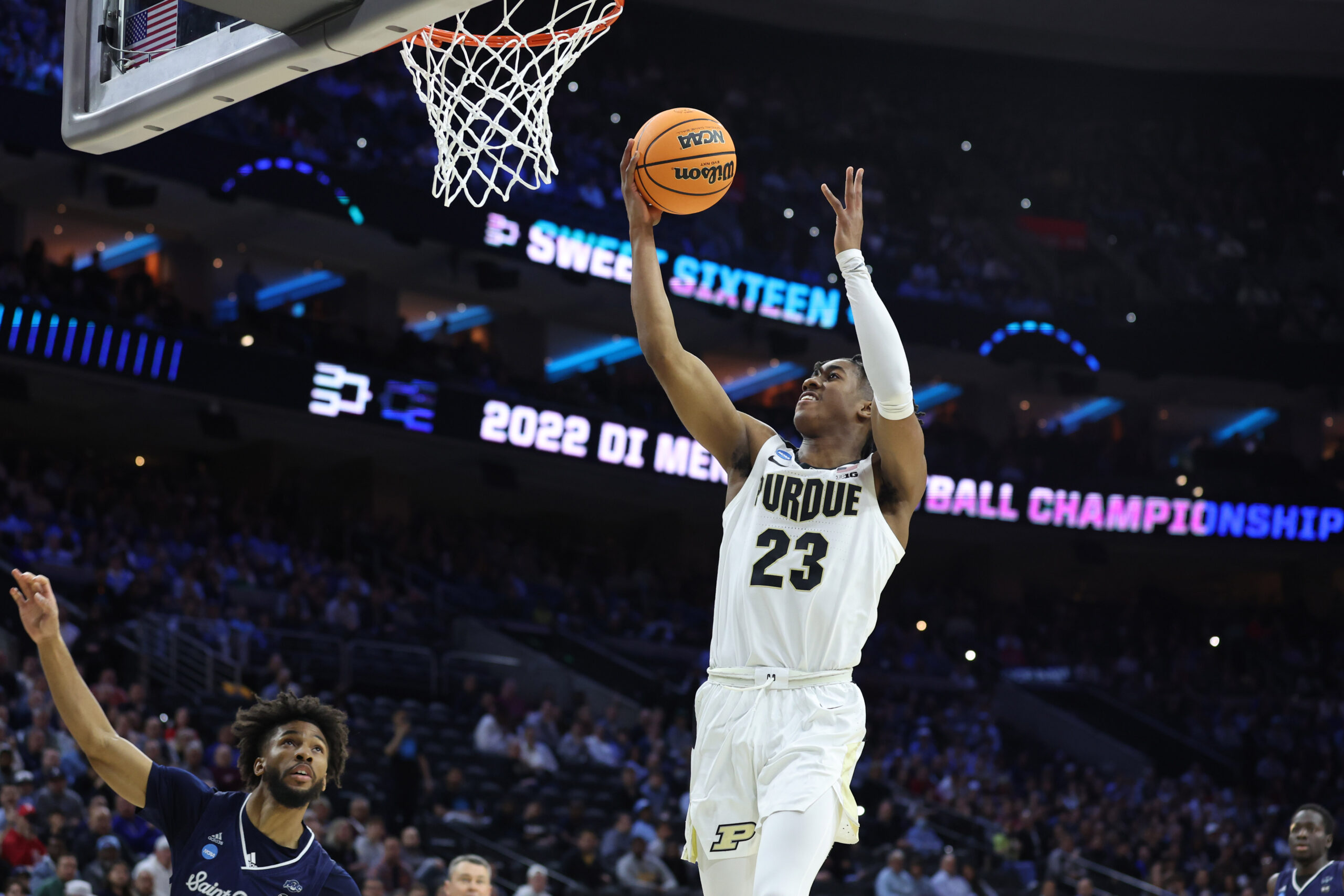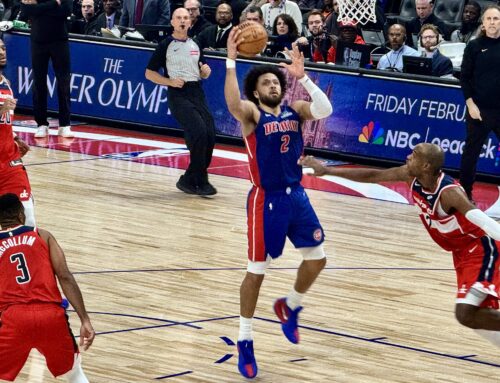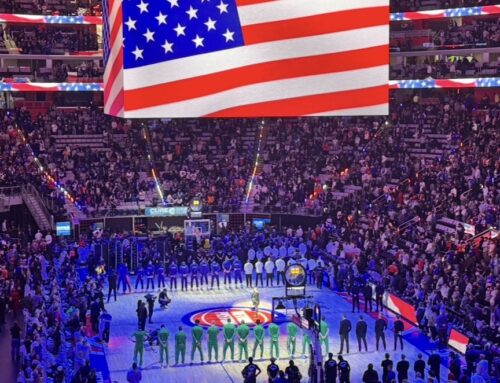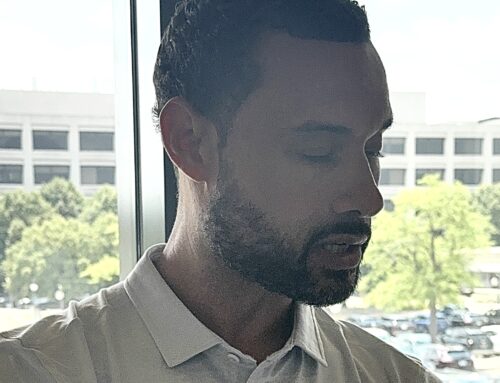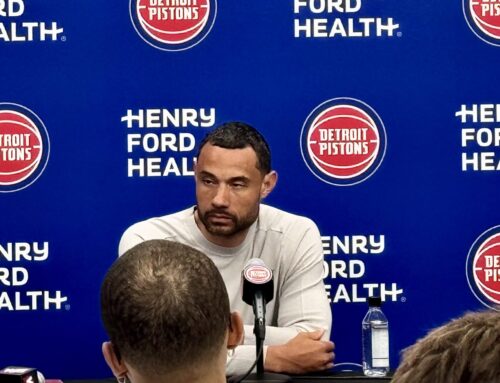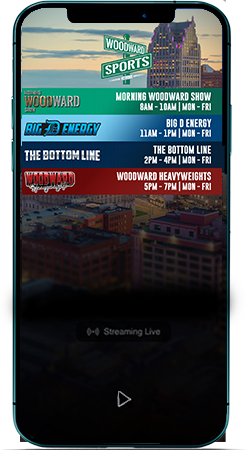The lottery gods were not in the Detroit Pistons’ favor this offseason. Despite holding a 40.1 percent chance of landing a top-three pick and a 52 percent chance of remaining in the top four, the Pistons fell to the fifth overall selection after the lottery.
Detroit likely misses out on the three big men who headline this year’s draft class with the fifth pick. Gonzaga’s Chet Holmgren, Auburn’s Jabari Smith and Duke’s Paolo Banchero are all projected to be selected within the first four picks.
Falling to the fifth pick does not mean the Pistons are destined to miss out on a potential star. There is still talent available outside the top four. Detroit’s fall means GM Troy Weaver has a more challenging decision to make.
Decisions like this are exactly why Weaver was brought to Detroit. It is easy to select Cade Cunningham with the first overall pick. It is hard to find the star outside the top selections, but Weaver has done it before. In the 2020 draft, the GM selected Isaiah Stewart and Saddiq Bey at 16th and 19th overall respectively. Both players were named to the All-Rookie team and are part of the Pistons’ core moving forward.
Weaver has options at the fifth pick. With the three big men likely off the board, there are a collection of wings and forwards to choose from. The following big board is where I rank the Pistons’ realistic options with the fifth pick.
Honorable mention: AJ Griffin, F, Duke
I like AJ Griffin, but not with the fifth pick. He is a knockdown shooter with self-creation upside. He has a lot of improvement to do on the defensive end. If the Pistons acquire another lottery pick in the draft, I think Griffin is definitely on the team’s radar. But with the fifth pick, I do not think he garners too much consideration.
Jaden Ivey, G, Purdue
The top player on my Pistons draft board is Purdue guard Jaden Ivey. The 20-year-old guard is the most electrifying prospect in the draft class.
Ivey offers a level of athleticism that is sorely missing from the Pistons’ starting lineup. He has burst to explode past his defenders on drives. He finishes around the rim through contact and from awkward angles. His three-point shot is not quite there, but he has shown consistent improvement between his freshman and sophomore seasons at Purdue.
He needs to improve as an off-ball player. Ivey was ball dominant during his time with the Boilermakers. He has flashed the ability to move off-ball and connect on catch-and-shoot opportunities, but they were not consistent. I have little doubt Ivey can adjust to playing off-ball.
Defensively, Ivey has all the tools to be a solid defender at the NBA level. What he needs to work on is his focus. At times, he is simply not engaged on the defensive end. The right coaching staff and the right team culture should go a long way towards unlocking Ivey’s potential on defense. At his best, Ivey is cutting off drives to the rim and picking off passing lanes.
If the Pistons draft Ivey, they would have a player who pushes the pace in transition. He is a springy lob threat in transition and cuts. In the long run, Ivey would make a great backcourt pairing with Cunningham. Ivey’s explosive drives to the rim are a change of pace from Cunningham’s more methodical offensive attacks.
If Ivey is on the board when the Pistons draft at five, he is the no-brainer selection. The 20-year-old has high upside to be a home run swing, but his floor should still make him a very reliable scorer at the NBA level.
Keegan Murray, F, Iowa
Keegan Murray has the highest floor of any of the remaining players available for Detroit. The Iowa forward is on the older side for a draft prospect, at the age of 21.
Murray is a solid three-level scorer. In the post, he does not waste any time. Murray is quick to get into a move to create separation from his defender and get a shot up. From beyond the arc, Murray runs off screens and spots up off pick-and-pops. He is a great off-ball shooter. He shot 39.8 percent on 4.7 three-point attempts per game this past season. The 21-year-old is solid off mid-range pull-ups.
Murray does need to work on creating for himself. The Iowa product does not possess the quick-twitch athleticism to turn the corner on drives. At times, he will settle for difficult shots when his driving lanes are cut off. Besides playing in the post, Murray is best utilized as an off-ball player who capitalizes on opportunities within the flow of the offense. He does not have the tight handle or burst to be an on-ball creator at this point in his career.
Defensively, Murray is versatile. He has the lateral quickness to stay in front of ball-handlers and cut off their driving lanes. He is superb on closeouts, rarely committing reckless closeouts. On the interior, Murray functions as a help-side defender. He tracks the ball well and denies entry passes.
If the Pistons draft Murray at five, it makes it more likely the team moves on from Jerami Grant and lands another lottery pick in return. Reports indicate the Portland Trail Blazers have interest in sending the seventh overall pick in exchange for Grant. Murray has the ability to perform at a similar level to Grant early on in his career.
Bennedict Mathurin, G, Arizona

Mar 20, 2022; San Diego, CA, USA; Arizona Wildcats guard Bennedict Mathurin (0) shoots against TCU Horned Frogs center Eddie Lampkin (4) in the second half during the second round of the 2022 NCAA Tournament at Viejas Arena. Mandatory Credit: Kirby Lee-USA TODAY Sports
Like Murray, Bennedict Mathurin is a high-floor prospect for Detroit. As a traditional shooting guard, Mathurin is the safe pick for a backcourt pairing with Cunningham.
Mathurin is lethal as an off-ball shooter. He shot 36.1 percent from beyond the arc on 6.1 attempts per game. Mathurin was heavily utilized off-ball in Arizona’s offense. He ran off screens, dribble hand-offs and spot-up catch-and-shoot opportunities. Mathurin possesses natural cutting instincts and is springy enough to finish lobs. He has a soft touch around the rim and can finish through contact.
With the ball in his hands, Mathurin is not quite as effective. The 19-year-old has some burst to turn the corner on defenders. But, if he is pushed off his line, he does not have the counter moves to reestablish his driving lane. Since Arizona did not utilize Mathurin as an on-ball player, he rarely had the opportunity to create for others. There is a lot of room for growth in Mathurin’s offensive game.
On defense, Mathurin has active hands. He has a knack for swiping the ball and disrupting passing lanes. Mathurin was really good when engaged on defense. However, at times he lags off-ball and gets poor positioning. He needs to work on his defensive consistency, especially as an off-ball defender.
Ideally, Mathurin is not the pick when the Pistons draft at five. While he is the safe option for the Pistons to pair in a backcourt with Cunningham, a potential Ivey and Cunningham pairing still has more upside, but if Ivey is gone, Mathurin is the next best option if the Pistons draft a guard with the fifth pick. If the Pistons make the proposed Portland trade, Mathurin would be a great selection at seven alongside Murray at five.
Shaedon Sharpe, G, technically Kentucky
Rounding out the draft board is Kentucky wing, Shaedon Sharpe. Sharpe and Ivey both have the highest ceiling of the prospects on this board, but I am very concerned about Sharpe reaching that ceiling. Sharpe did not play a single minute for Kentucky in his only season with the team. Everything I have to go on for Sharpe is from his high-school tape.
Sharpe is a natural scorer. He has good verticality around the rim. The 18-year-old can finish from different launch angles and possesses good body control. He is a dangerous threat if he is able to get a full head of steam on drives. Sharpe has really good range on his shots; he combines good footwork and balances to consistently knock down his shots.
While Sharpe is vertically athletic, he does not have an explosive first step. Defenders at the high school level were often able to cut off his driving lane. His handle also has a lot of room for improvement. He loses control of the ball and is a pickpocket risk with the ball in his hands.
It is hard to say that Sharpe even tries on defense. He does not have good defensive awareness, his lateral quickness is poor and he lacks overall discipline. Sharpe often gives up on defense once the ball-handler makes their first move. He allows the offensive player to create a lot of separation without attempting to recover. It is not that Sharpe is incapable of being a solid defender. He has all of the physical tools to be one. Coaches need to overhaul Sharpe’s defensive game, eliminating his myriad of poor tendencies.
That is not to say that Sharpe is not a good prospect. I still think he will develop into a good player, but I question what his ceiling truly is. During the draft process, Sharpe and his camp avoided showcasing the 18-year-olds abilities. He skipped the scrimmage portion of the combine, and his private workout left scouts wanting more. He has really good potential, but he is not a risk I would take with the fifth pick.
(Featured Image Credit: Bill Streicher-USA TODAY Sports)

